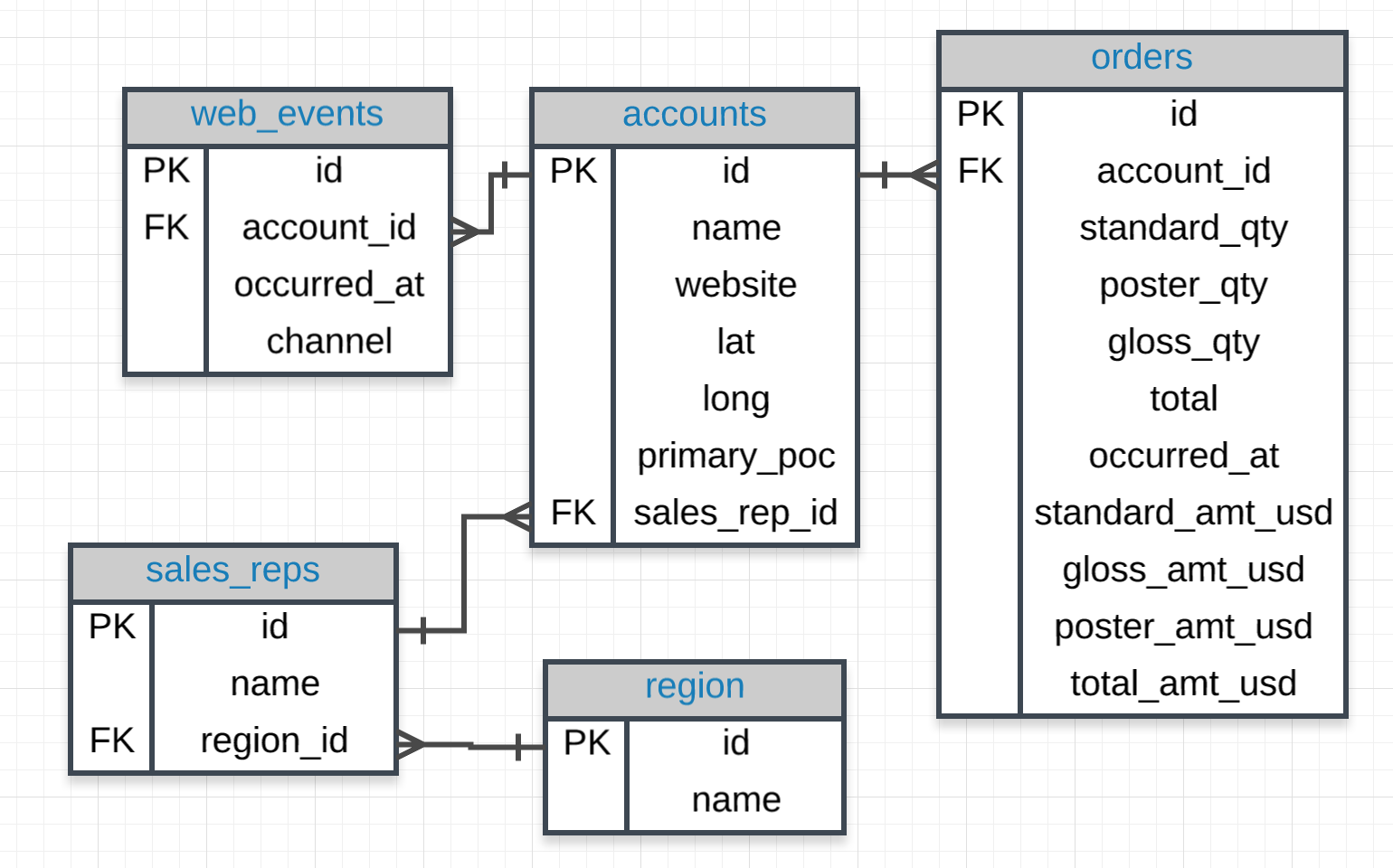19. Quiz: Last Check

I recommend testing your queries with the environment below, and then saving them to a file. Then compare your file to my solutions on the next concept!
If you have two or more columns in your SELECT that have the same name after the table name such as accounts.name and sales_reps.name you will need to alias them. Otherwise it will only show one of the columns. You can alias them like accounts.name AS AcountName, sales_rep.name AS SalesRepName
Questions
- Provide a table that provides the region for each sales_rep along with their associated accounts. This time only for the
Midwestregion. Your final table should include three columns: the region name, the sales rep name, and the account name. Sort the accounts alphabetically (A-Z) according to account name. - Provide a table that provides the region for each sales_rep along with their associated accounts. This time only for accounts where the sales rep has a first name starting with
Sand in theMidwestregion. Your final table should include three columns: the region name, the sales rep name, and the account name. Sort the accounts alphabetically (A-Z) according to account name. - Provide a table that provides the region for each sales_rep along with their associated accounts. This time only for accounts where the sales rep has a last name starting with
Kand in theMidwestregion. Your final table should include three columns: the region name, the sales rep name, and the account name. Sort the accounts alphabetically (A-Z) according to account name. - Provide the name for each region for every order, as well as the account name and the unit price they paid (total_amt_usd/total) for the order. However, you should only provide the results if the standard order quantity exceeds
100. Your final table should have 3 columns: region name, account name, and unit price. In order to avoid a division by zero error, adding .01 to the denominator here is helpful total_amt_usd/(total+0.01). - Provide the name for each region for every order, as well as the account name and the unit price they paid (total_amt_usd/total) for the order. However, you should only provide the results if the standard order quantity exceeds
100and the poster order quantity exceeds50. Your final table should have 3 columns: region name, account name, and unit price. Sort for the smallest unit price first. In order to avoid a division by zero error, adding .01 to the denominator here is helpful (total_amt_usd/(total+0.01). - Provide the name for each region for every order, as well as the account name and the unit price they paid (total_amt_usd/total) for the order. However, you should only provide the results if the standard order quantity exceeds
100and the poster order quantity exceeds50. Your final table should have 3 columns: region name, account name, and unit price. Sort for the largest unit price first. In order to avoid a division by zero error, adding .01 to the denominator here is helpful (total_amt_usd/(total+0.01). - What are the different channels used by account id
1001? Your final table should have only 2 columns: account name and the different channels. You can try SELECT DISTINCT to narrow down the results to only the unique values. - Find all the orders that occurred in
2015. Your final table should have 4 columns: occurred_at, account name, order total, and order total_amt_usd.
Code
If you need a code on the https://github.com/udacity.